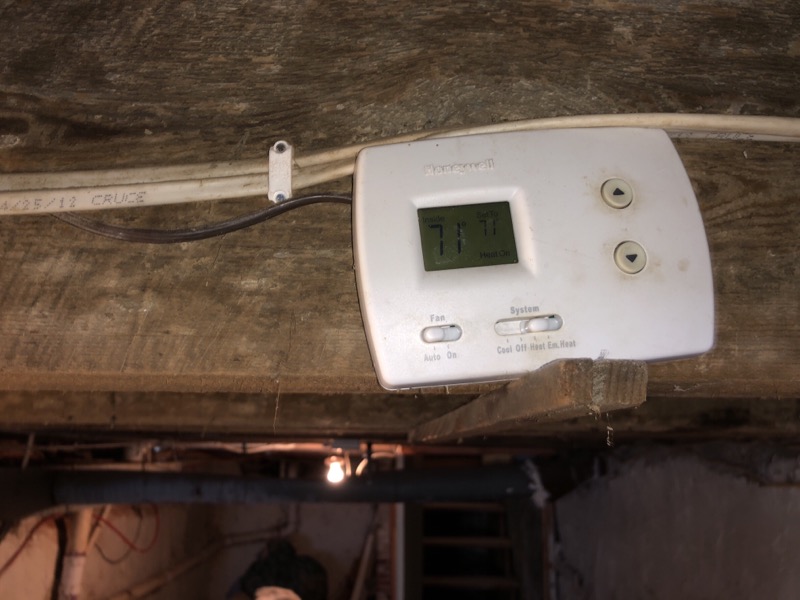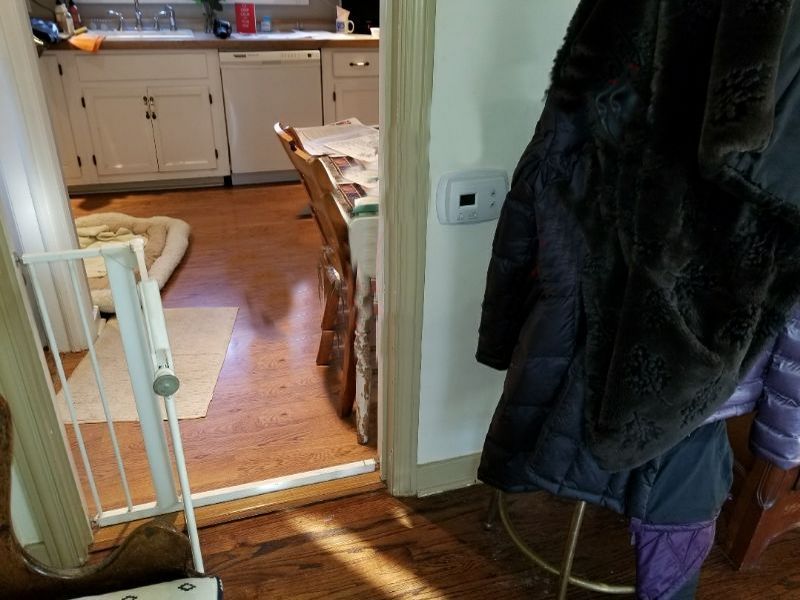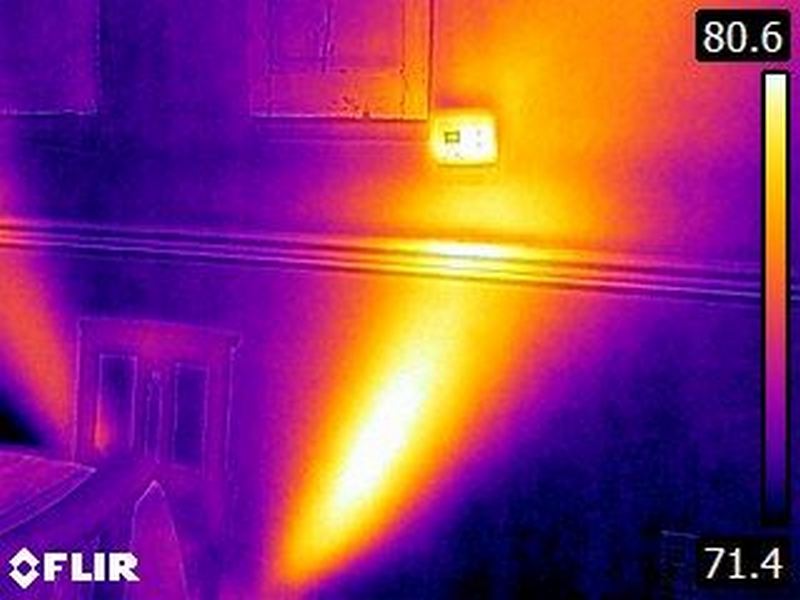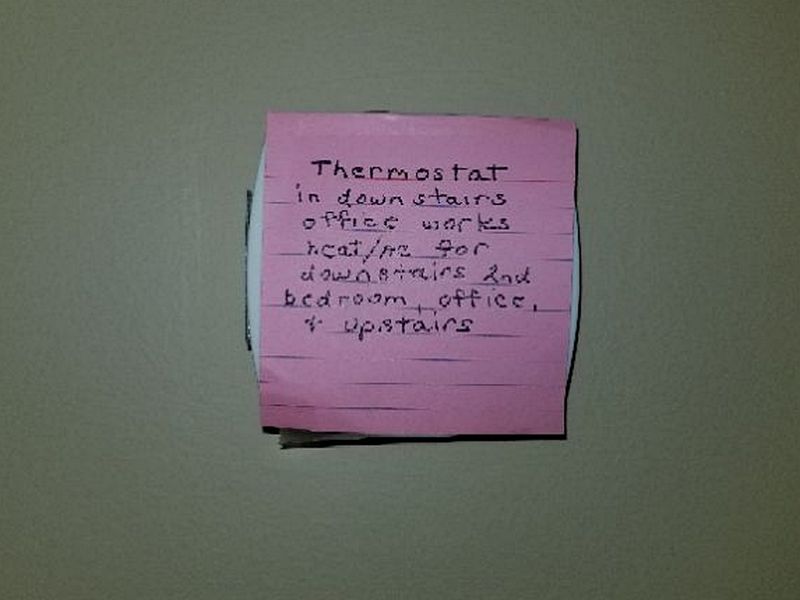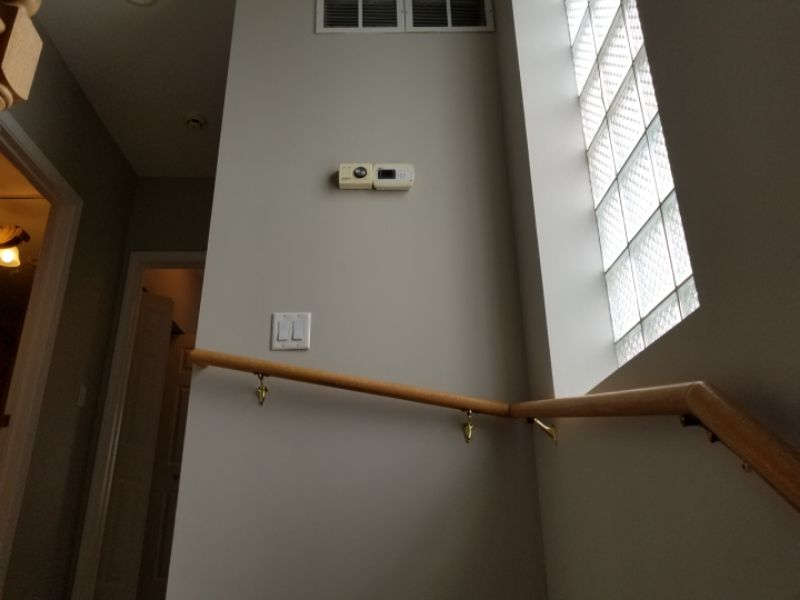For a majority of homeowners, the thermostat is the sole point of interaction with their home’s HVAC system. It is the primary outward-facing control. Some of our clients don’t even use them; they rely on on the regular service call and leave it to the technician. These once simple devices have evolved to become highly sophisticated members of the “internet of things.” Some can be controlled remotely from anywhere, and may be just one sensor point in a smart home.
Our inspection of the thermostats is relatively limited. We do not test or confirm programmable or internet-accessible features. We ensure that the location is reasonable. Thermostats should be centrally located within the conditioned area and, for forced air systems, near the return. This is where the most accurate reading can be made of the unconditioned air. They shouldn’t be on exterior walls, near windows or exterior doors, behind doors likely to remain open, or subject to drafts or direct sunlight. Mercury bulb units must be level, All thermostats should be securely mounted at average eye height.
The thermostat is inoperative. This affect proper system function. Hire an HVAC contractor to make the required repairs.
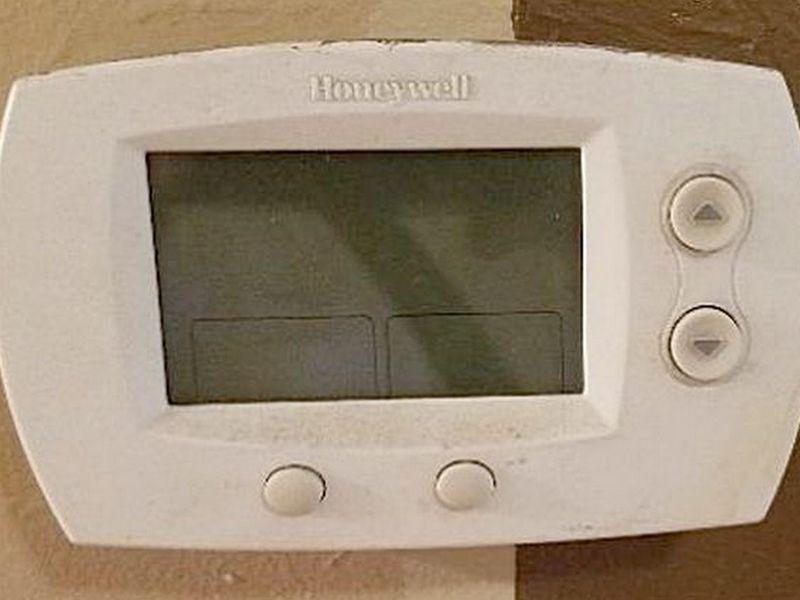
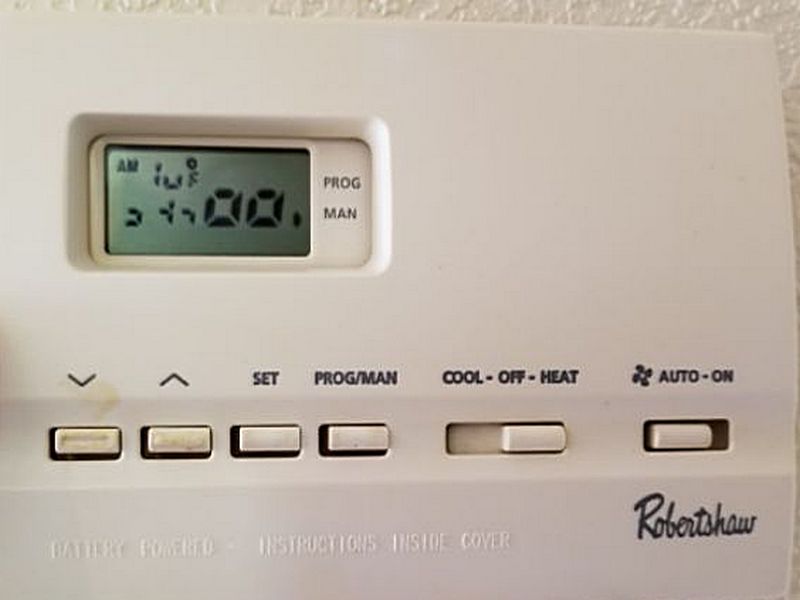
The thermostat is damaged. This can affect proper system operation. Hire an HVAC contractor to make the required repairs.
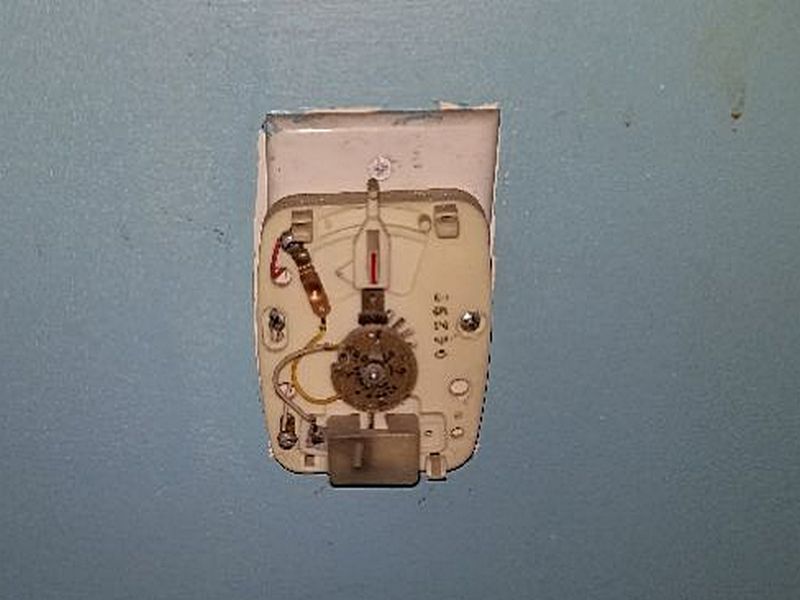
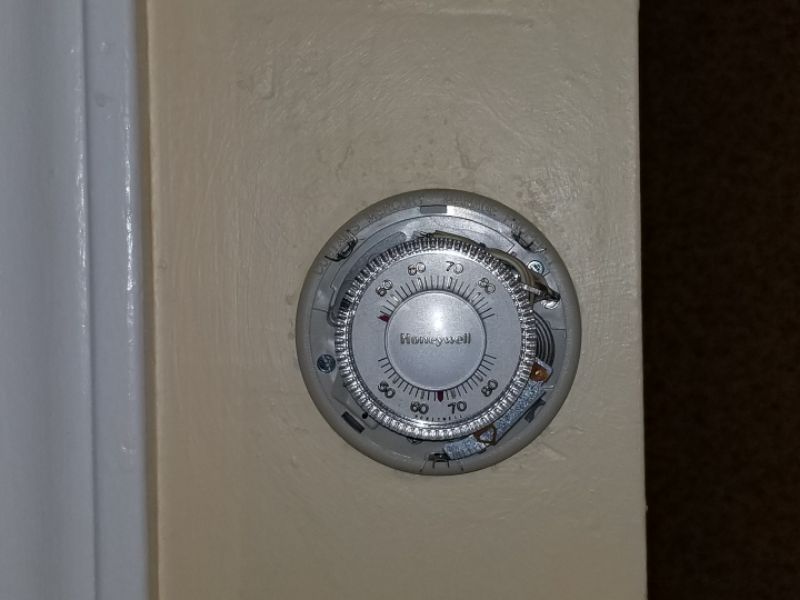
The thermostat is missing. This affects proper system function. Hire an HVAC contractor to make the required repairs.
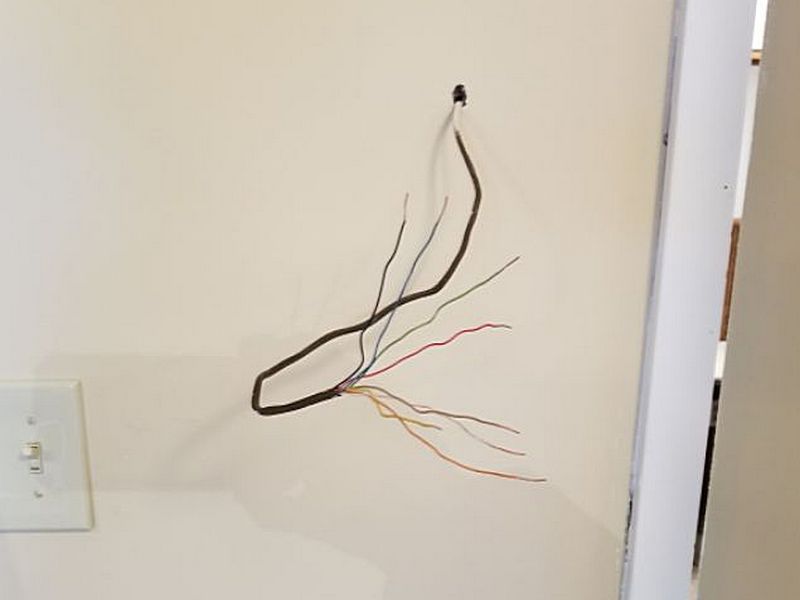
The thermostat is not level. Bulb-type thermostats must be secured in a level position to operate correctly. Hire an HVAC contractor to make the required repairs.
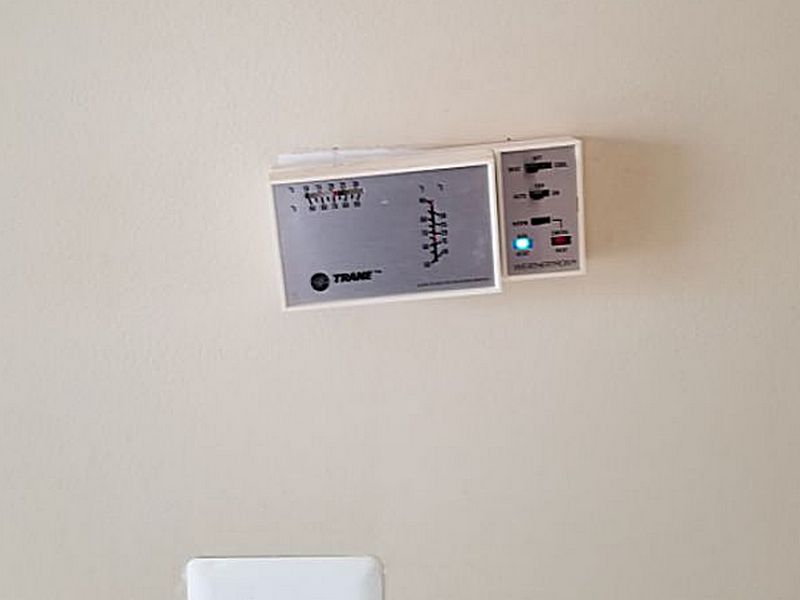
The thermostat is poorly located and may result in improper control of the HVAC system. Hire an HVAC contractor to make the required repairs.
